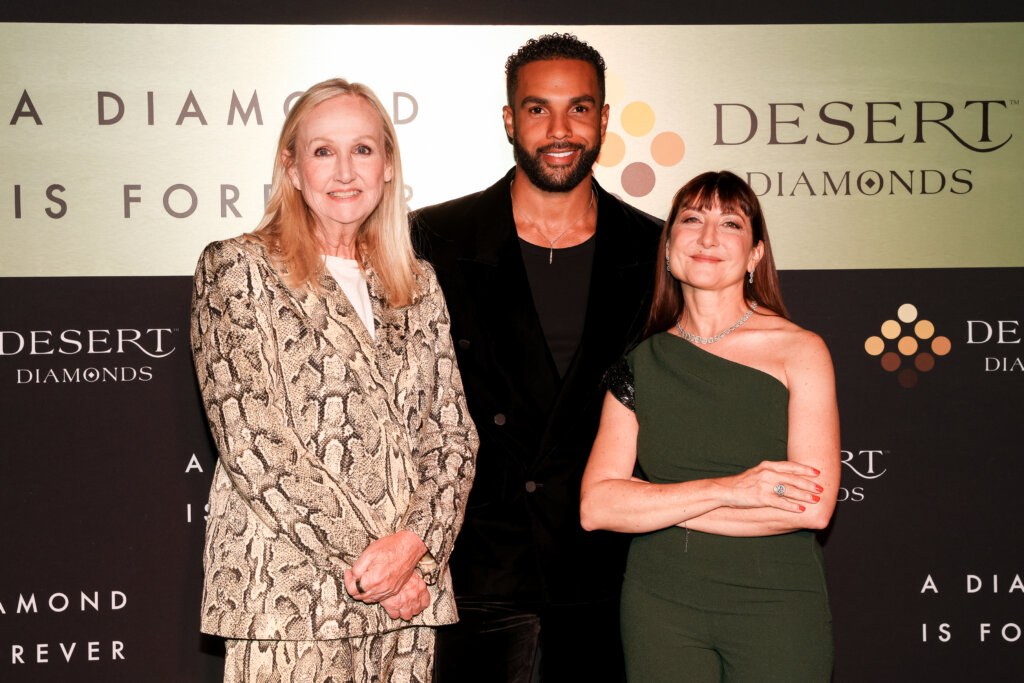
As part of our In Conversation With…series, COUTURE’s Michelle Orman sat down with Randi Molofsky from For Future Reference to have a conversation about words and how your words and voice matter.
While in the world of jewelry, the primary focus is on the aesthetic voice of your brand, the visual language of your jewelry is tied up in the words and language you use to describe your jewelry. Ask yourself how you would describe your jewelry if there was no picture to accompany your words?
Establish Your Voice
Randi and Michelle both encourage designers and other business owners to create a Master Document that includes key words and phrases that you can use consistently throughout your brand.
- First of all, take an initial assessment of your work, whether you’re just starting out or you’re doing a brand re-fresh. What are you trying to say with your jewelry? How can you use words to express that?
- Maintain consistency in how you describe your metals, your carat weights, your color stories, etc.
Know Your Audience
While the language of your brand should remain consistent, your tone of voice can vary depending on the outlet—you may use a third-person perspective on your website and a first-person perspective on your social media.
- A third-person perspective, i.e. “The work of this designer…” can create a more elevated feel, which can be helpful if your website is a point-of-purchase for your collection.
- A first-person perspective, i.e. “My work is inspired by trips to the beach…” is less formal and can create a greater sense of engagement and allow you to connect with your social media followers on a personal level.
- A third-person perspective also creates a boundary between you and the audience, which can be helpful when writing about yourself for your artist bio. (P.S. Nobody enjoys writing about themselves, it’s uncomfortable! Third-person can create a safety net of sorts!)
Finding Your Words
So fine, you’re committed to developing a Master Document of key words and phrases to describe you and your brand, but how do you find those words and phrases?
- Keep in mind that the concepts that you use in your designs can inform the language of the brand.
- Your collection is rooted in 1970’s style? A well placed “groovy” used throughout your brand lexicon might be a good idea!
- Your African heritage is woven throughout your collection by way of inspiration from textiles and block printing? Use words that evoke those things.
- Inspired by Mid-century architecture and mid-century furniture? How have words been used to evoke that time in terms of how angles and color palettes are described?
- Look to art, literature, books, movies and music that evoke your jewelry’s sensibilities and review the ways in which those concepts are described.
- Consider writing about your brand as part of the overall creative process; take time out of your day to write down key words and phrases.
“Vigorous writing is concise. A sentence should contain no unnecessary words, a paragraph no unnecessary sentences, for the same reason that a drawing should have no unnecessary lines and a machine no unnecessary parts. This requires not that the writer make all sentences short, or avoid all detail and treat subjects only in outline, but that every word tell.” William Strunk Jr. and E.B. White, The Elements of Style.
Word Hacks, Dos and Don’ts
While writing about yourself and your brand can be daunting, remember that doing the hard work now will save time in the future. Here are a few tips, hacks, dos and don’ts that Randi and Michelle shared.
- Be succinct in your language, aka, get to the point! Sometimes it’s helpful to write everything you want to say in a stream of consciousness, then go back in and make edits.
- The Thesaurus can be your best friend! If you’re trying to find just the right word to express what you’re trying to say, Thesaurus.com can lead you down a word rabbit hole that results in establishing precisely what you want to say.
- “The Elements of Style” by William Strunk Jr. and E.B. White is a small, useful resource that can be easily referenced.
- In the United States, punctuation always goes inside quotation marks. The one exception to this rule is colons and semi-colons, otherwise, always put punctuation “inside the quotes!”
- Avoid using the same descriptive word in the same paragraph. There are multiple ways to say the same thing, as you’ll find on Thesaurus.com!
- Looking to other industries such as fashion, automotive, watches, art and other luxury industries can help spark creativity and take you away from the “sameness” of how jewelry is often described.
- IMDB, song lyrics, make-up colors, nail polish colors, paint chip colors and famous quotes can also spark inspiration, especially when naming collections or describing colors.
- Be professional in your writing—use punctuation, capital letters and complete sentences when communicating on behalf of your brand.
- Get another set of eyeballs on your writing! It’s okay to ask for help, or to ask someone else to give what you’ve written a quick review. Even if the person you’re leaning on isn’t a self-proclaimed writer, another set of eyes on your work is never a bad idea.
- Don’t be overly descriptive or declarative; giving too much detail about your design and fabrication process, as an example, can not only rob your jewelry of its romance and mystery, but it may back you into a corner as your business and brand evolves.
- Don’t use confusing language.
Your choice of words in describing your brand can ultimately prompt a purchasing decision. The power of words also extends to how we think of ourselves internally. Try to make sure that the language you’re using in your internal dialogue are supportive, kind, loving and empowering and this will be reflected in your brand and your business, and in how you feel about yourself and your accomplishments.


